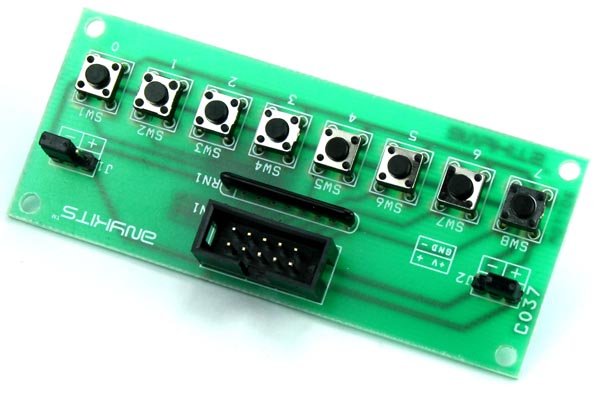Rogers RO4730G3 PCB-Enhance Antenna Performance
Introduction
In the ever-evolving world of wireless communication, antenna performance is crucial for achieving reliable and efficient connectivity. Introducing Rogers RO4730G3, a high-quality hydrocarbon/ceramic/woven glass laminate thatupdates antenna design. Offering a cost-effective alternative to traditional PTFE-based laminates, RO4730G3 provides exceptional dielectric properties, compatibility with FR-4 processing, and a host of other benefits. In this comprehensive productblog, we will delve into the features, benefits, construction details, statistics, and applications of RO4730G3, empowering designers and engineers to optimize cost and performance in antenna design.
Features
Rogers RO4730G3 PCB Materials presents a range of impressive features that establish it as a superior choice for antenna applications:
2.1 Dielectric Constant (Dk):
With a Dk of 3.0 +/- 0.05 at 10GHz, RO4730G3 ensures reliable signal transmission and reception, facilitating improved antenna performance.
2.2 Low Loss and Dissipation Factor:
Sporting a dissipation factor of 0.0028 at 10GHz, this laminate minimizes signal loss, resulting in enhanced efficiency and reduced power consumption.
2.3 Thermal Stability:
RO4730G3 boasts a thermal coefficient of Dk of 34 ppm/°C and exhibits a low coefficient of thermal expansion (CTE) matched to copper (15.9 ppm/°C, 14.4 ppm/°C, 35.2 ppm/°C). These features enable the laminate to withstand temperature variations and maintain the integrity of the antenna over a wide operating range.
2.4 High Temperature Performance:
With a glass transition temperature (Tg) exceeding 280°C, RO4730G3 ensures excellent stability and reliability in demanding operating conditions.
2.5 Advanced Thermal Conductivity:
Featuring a thermal conductivity of 0.45W/mk, RO4730G3 effectively dissipates heat, preventing overheating issues that can affect antenna performance.

Benefits
RO4730G3 PCB Circuit Board offers a multitude of benefits that make it a superior choice for antenna applications:
3.1 Reduced PIM and Low Insertion Loss:
The low loss dielectric and low profile foil of RO4730G3 contribute to reduced passive intermodulation (PIM) and insertion loss, ensuring optimal signal transfer and minimizing signal degradation.
3.2 Lightweight and Low Density:
Utilizing unique filler and closed microspheres, RO4730G3 is approximately 30% lighter than PTFE/Glass laminates. This characteristic enables the development of lightweight antennas, making it ideal for applications where weight is a critical factor.
3.3 Design Flexibility and Automated Assembly Compatibility:
With a low Z-axis CTE (<30ppm/°C) and high Tg, RO4730G3 offers excellent design flexibility, enabling the creation of intricate antenna designs. Furthermore, its compatibility with automated assembly processes streamlines production and reduces costs.
3.4 Consistent Circuit Performance:
RO4730G3's low TCDk (<40 ppm/°C) ensures consistent circuit performance over a range of temperature variations. This stability is essential for maintaining reliable communication in dynamic environmental conditions.
3.5 Ease of Fabrication and PTH Process Capability:
Featuring a specially formulated thermoset resin system and filler, RO4730G3 offers ease of fabrication and seamless plated-through-hole (PTH) process capability. This streamlined manufacturing process translates into cost savings and accelerated time-to-market.
3.6 Environmentally Friendly:
Compliant with lead-free processes and RoHS standards, RO4730G3 aligns with sustainable manufacturing practices, ensuring both superior performance and environmental responsibility.
PCB Construction Details
RO4730G3 PCB Circuit Board is available in a 2-layer rigid PCB configuration, with the following construction details:
Board dimensions: 158mm x 127 mm (1PCS) with a tolerance of +/- 0.15mm.
Minimum Trace/Space: 4/6 mils, allowing for precise routing of antenna traces.
Minimum Hole Size: 0.3mm, facilitating the integration of various components.
No Blind Vias, ensuring simplicity in manufacturing and reducing costs.
Finished board thickness: 1.6mm, providing structural integrity and stability.
Finished Cu weight: 1oz (1.4 mils) outer layers, optimizing signal integrity.
Via plating thickness: 20μm, ensuring reliable electrical connections.
Surface finish: Electroless Nickel Electroless Palladium and Immersion Gold (ENEPIG), enhancing the solderability and corrosion resistance of the PCB.
Top Silkscreen: White, enabling clear component labeling and identification.
Bottom Silkscreen: No, promoting a clean and minimalist appearance.
Top Solder Mask: Blue, providing protection against solder bridging and improving aesthetics.
Bottom Solder Mask: No, allowing for easy inspection of solder joints.
100% Electrical Test: Each PCB undergoes rigorous electrical testing to ensure quality and reliability.
PCB Statistics
RO4730G3-based 60mil PCB exhibit the following statistical information:
Components: 31, facilitating the integration of various circuit elements.
Total Pads: 68, offering ample connectivity options for components.
Thru-Hole Pads: 42, supporting the use of through-hole components.
Top SMT Pads: 26, enabling surface-mount technology (SMT) component placement.
Bottom SMT Pads: 0, highlighting the 2-layer PCB configuration.
Vias: 37, allowing for electrical connectivity between layers.
Nets: 2, ensuring proper interconnection and signal flow throughout the design.
Availability and Typical Applications
RO4730G3 Rogers PCBs are readily available worldwide, empowering engineers globally to leverage its exceptional attributes for antenna design. Some typical applications for RO4730G3 PCBs include Cellular Base Station Antennas, where its low loss, high frequency compatibility, and thermal stability play a critical role in achieving reliable wireless connectivity.
Conclusion
Rogers RO4730G3 PCBs provide a cost-effective, high-performance solution for antenna design challenges. With its impressive features, including low loss dielectric, advanced thermal conductivity, and exceptional stability, RO4730G3 high frequency PCB enables designers to optimize cost and performance without compromising on quality. Empowered by its extensive benefits and application versatility, engineers worldwide can unlock new possibilities in wireless communication. Embrace the future of antenna design with Rogers RO4730G3 PCBs, and achieve unparalleled connectivity in the digital age.











